THE LINK to #urbanana:
5 questions for … Daniel Wöllenstein – Shapes and scars
in English: 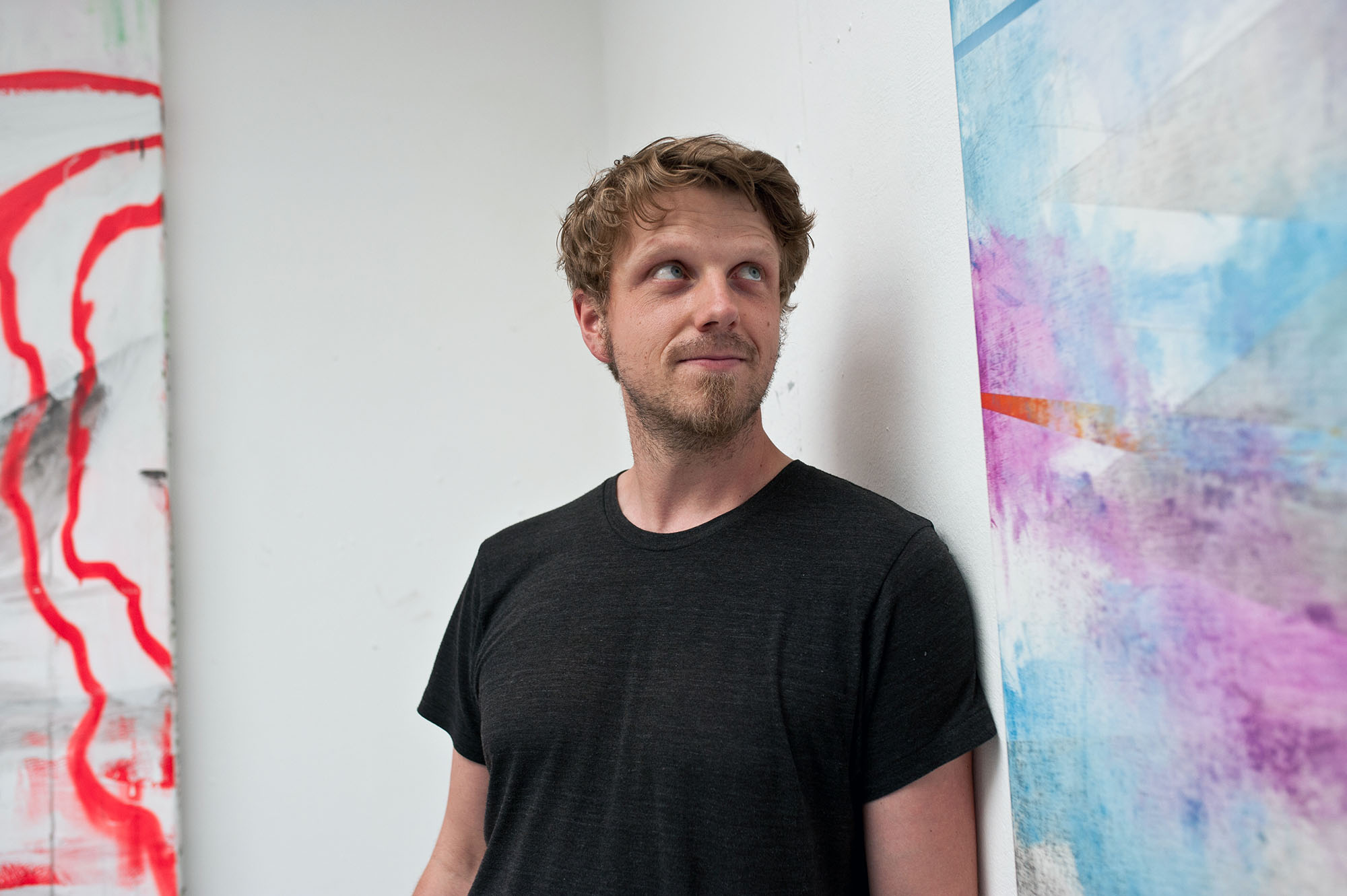
The German version: here.
» ... The surface of the images often looks very raw and 'scarred' and thus receives its own aesthetics that is inherent in the material, which I greatly appreciate.«
Daniel Wöllenstein, painter and chairman of the KunstWerk Cologne association
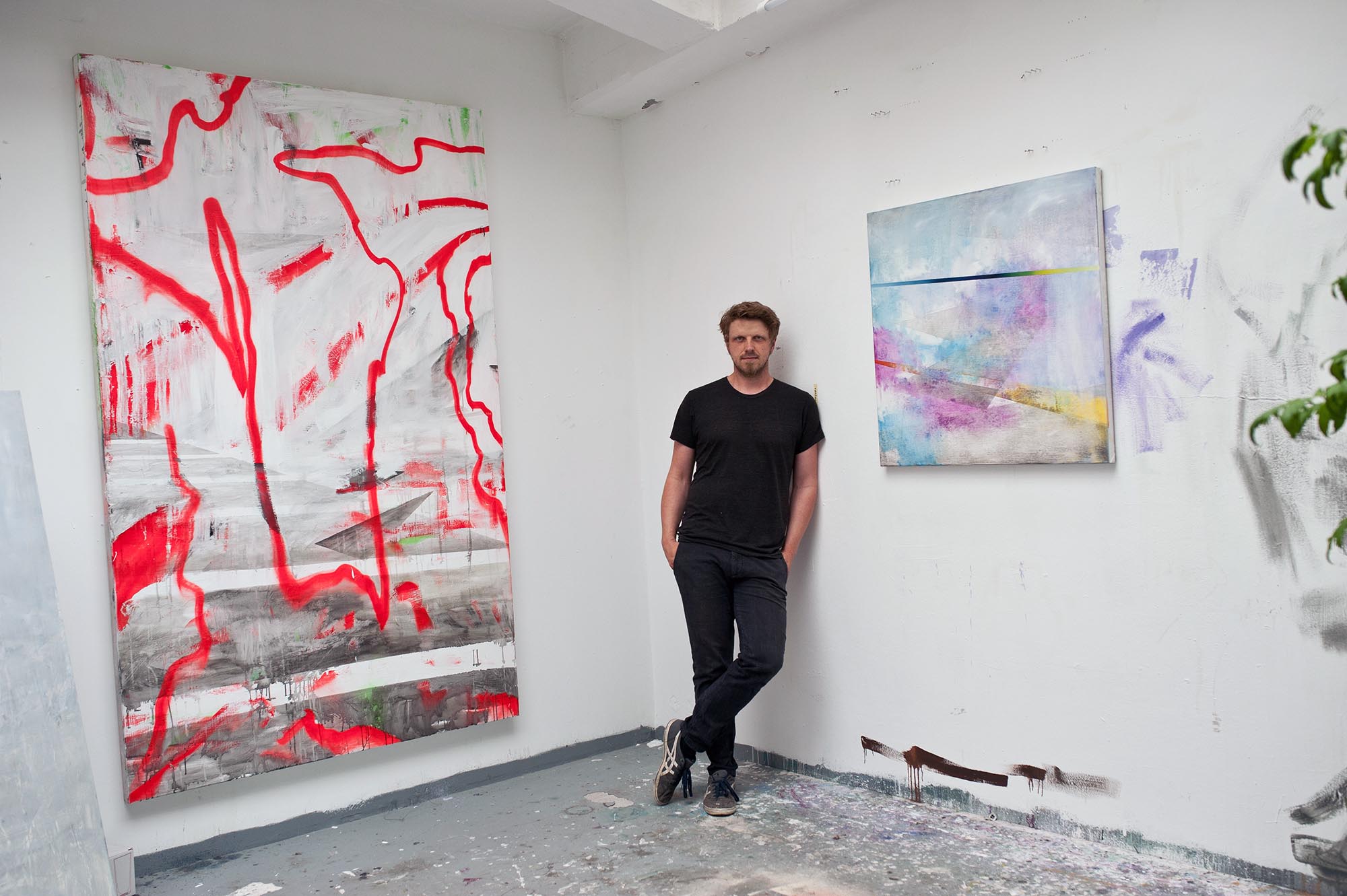
Daniel Wöllenstein
Artist and first chairman of the association of the KunstWerk since 2016
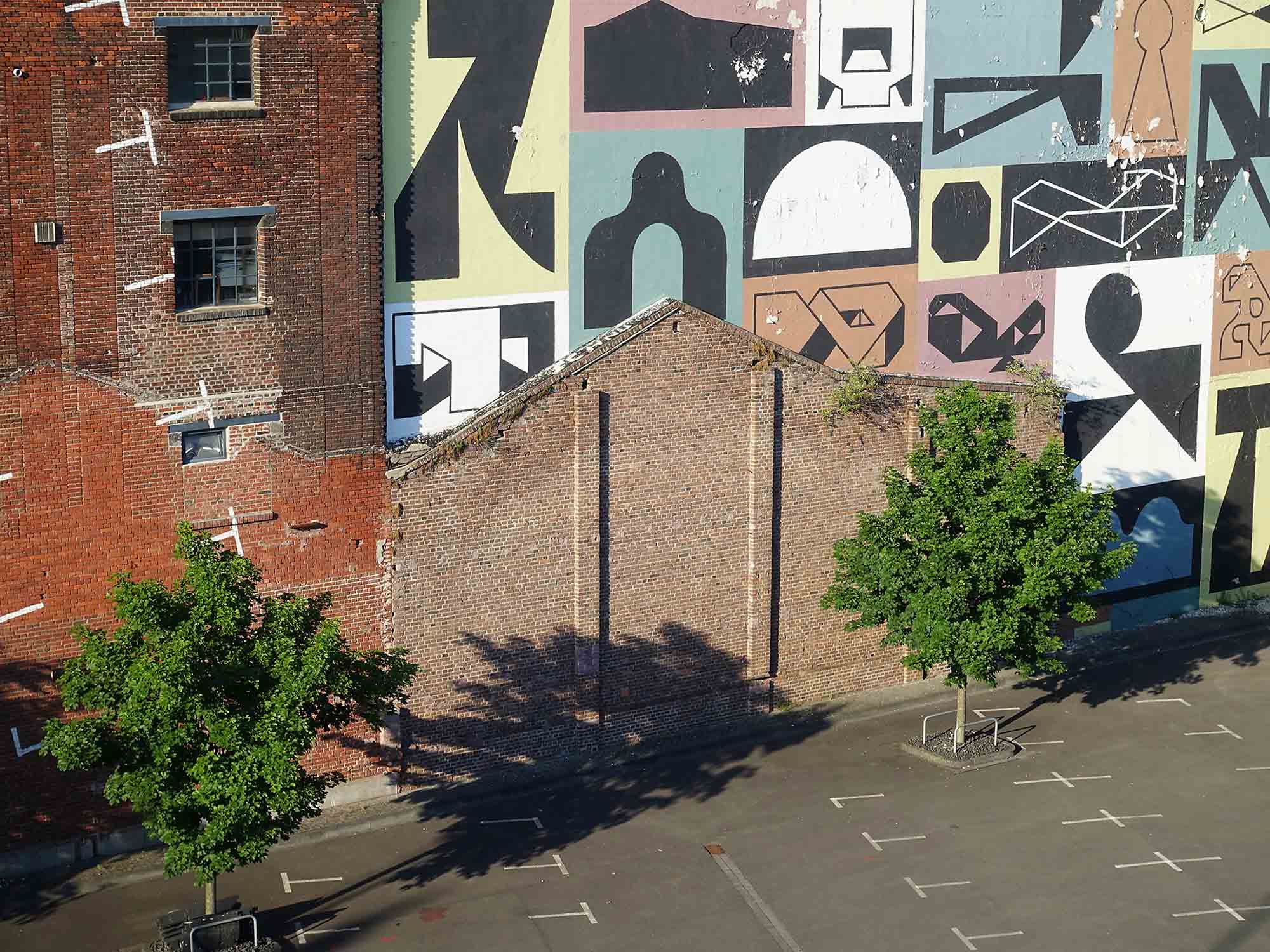
KunstWerk Cologne
The group of buildings was built in 1908, based on plans by Otto Grah, as a multi-floor block development and ...
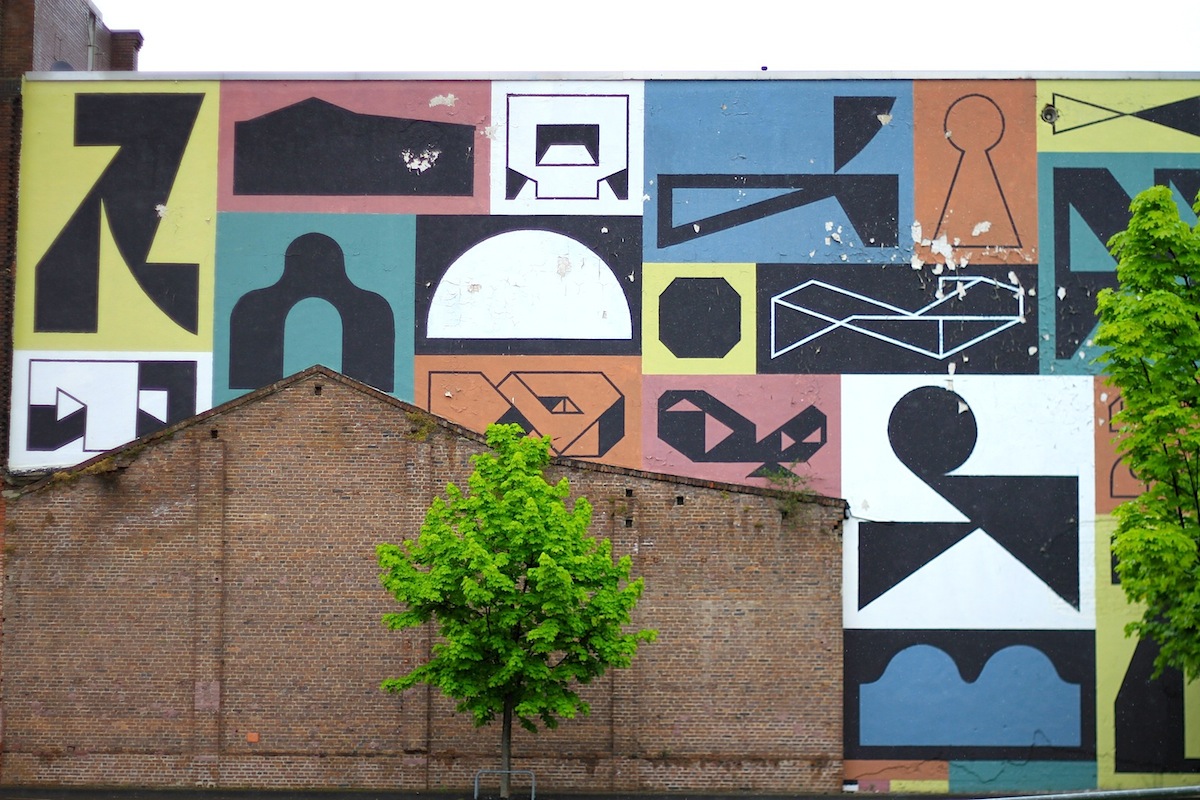
KunstWerk Cologne
... addition to existing buildings for the Cologne rubber thread factory, formerly Kohlstadt & Comp.
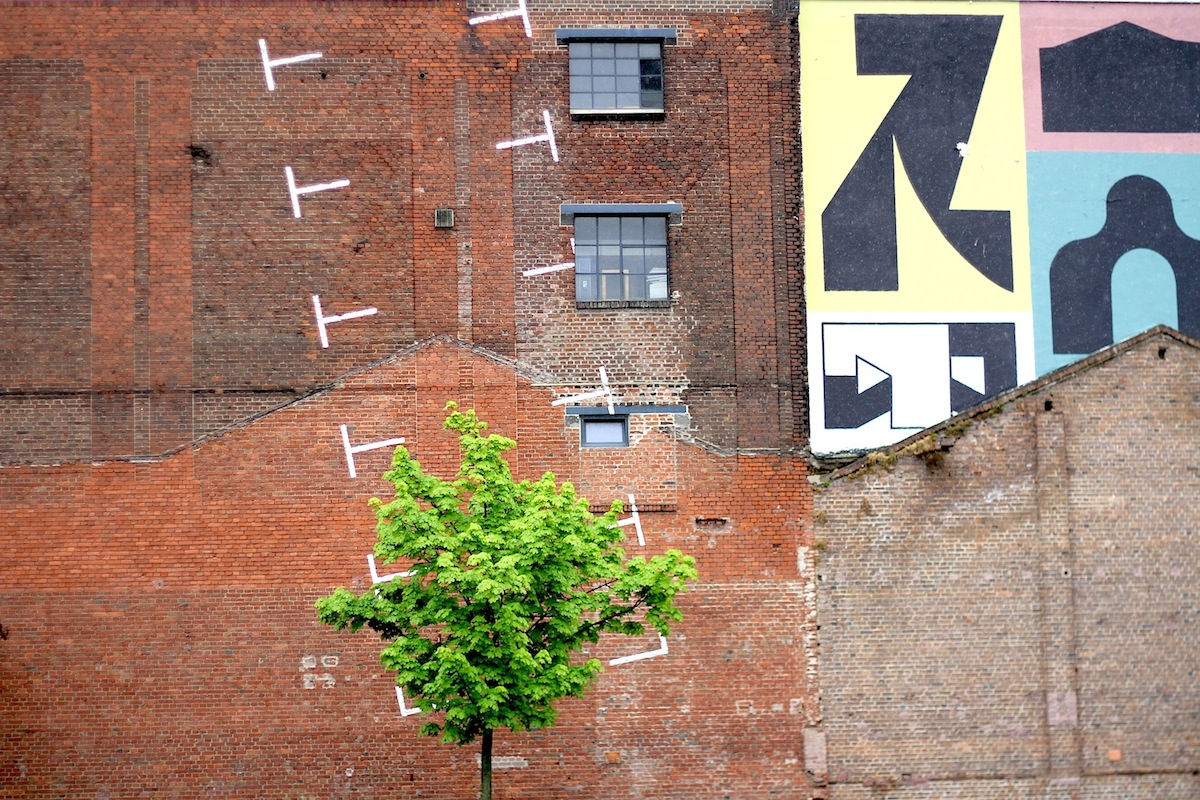
KunstWerk Cologne
In the beginning, rubber thread was produced, later seamless rubber goods, such as suction cups, surgical gloves, swim caps etc.

KunstWerk Cologne
In 1972 the plant was closed down after bankruptcy and the vocational training centre of the city of Cologne moved in. Since 1995, the KunstWerk Cologne has been located in the landmarked building.
1. What is the KunstWerk?
The KunstWerk is Germany's largest self-managed studio house. At least that is what it has been written on our homepage for several years. I am not sure if it is still true ... Located in an old factory building in Cologne-Mülheim, 150 artists, musicians, and designers work in 88 studios and 12 rehearsal rooms, serving virtually all art genres and musical styles. There is an exhibition hall and an event room. The House is run by a voluntary board of directors, made up of six members, elected annually, is supported by two committees, which are responsible for the exhibition program and the rental of the studios. In addition, there are four permanent employees in charge of building services, accounting, cultural management, and building cleaning.
2. How has the studio house changed in recent years? How do you see its future development?
The house opened and the association was founded in 1995. In the first few years, the community was not only made up by artists, but was rather an anarchist collection of different personalities. The work situation was by no means assured, but the house with its members was in a tolerated tenancy relationship, which was repeatedly threatened with termination. In 2003, the board of directors at the time was able to acquire a 30-year lease, which of course resulted in a completely new work security, but also entailed the obligation to take care of renovations and fire protection.
In order to curb the uncontrolled growth in the house, a rental committee was set up at some point, which selected individuals interested in the studio on the basis of their artistic work and personal compatibility with the house. Since then, the artist community in the house has become increasingly professionalized. The work of our exhibition committee is also worth highlighting. In the last few years PIK (Project space In the KunstWerk) has initiated an exhibition program, which has made the KunstWerk increasingly well-known and which is characterized by high artistic quality of the external and in-house artists in the individual exhibitions. For the future, I see the potential of the house to further network in the art business and thereby achieve a degree of recognition well beyond Cologne. As a result, our event cellar will be revitalized in the future by readings and concert series. At the moment, there are still a few building law obstacles to overcome, but they will be resolved in the near future and interested parties for events are waiting in the starting block.
3. Every two years, the Circle of Friends of KunstWerk awards an art prize. What is behind the idea of this award? What makes this year's nominees special?
Our Circle of Friends has been supporting our house for several years. In addition to the general support of the House, the Circle of Friends and the art prize offer concrete support for individual artists. The motivation of the artists in the house to apply for the award is very high and the final exhibition of the five "shortlist artists" offers a perfect opportunity to juxtapose the individual artistic positions.
Describing the work of the 5 nominees in detail would go beyond the available scope and it is difficult to give justice to the individual in a brief summary. However, what all artists have in common is outstanding independence in their works, which exhibit a concentrated, detailed examination of their respective subjects in line with the zeitgeist.
4. Please desribe your work as an artist.
I am a painter. My focus is - to be very brief - in the exploration of colour and shape in the process of my work. In the last few years, my subject has turned away from the figurative and more and more towards purely abstract works. There are always moments when I miss the point of the "finished picture" and paint beyond. In the end, this results in works that sometimes conceal up to ten previous images, almost complete, under the final layers before they are finished. Accordingly, the surface of the images often looks very raw and "scarred" and thus receives its own aesthetics that is inherent in the material, which I greatly appreciate. Sometimes, however, this way of working can also be very frustrating: you have painted thirty pictures and ultimately there are three in the studio. Sometimes - quite rarely - the first layer succeeds.
5. Where is your favourite spot in your hometown and why and outside of Cologne?
This is very difficult to answer, as many places have such different merits that I could hardly organize them in a ranking. The KunstWerk or the complete area with its buildings and workshops and people is definitely at the forefront. I also consider the Odonien, with its mix of raw steel art and Mad Max atmosphere and the events taking place there, as one of my favorite places in Cologne. Outside of Cologne? No particular place – I think it would be somewhere with high mountains and raw nature and relatively deserted.
»The press car park for the Cologne Fair is located at the spot where the connecting road between Deutz and Mühlheim passes under a bridge (Zoobrücke) as well being surrounded by streets of different functional and spatial nature ... Interpreting this space with its numerous traffic signs and graphics as an artistic piece, Anwohnerpark repeats the existing carpark graphics on the party wall of the Kunstwerk.«
osa_ office for subversive architecture on their installation "Anwohnerpark" at the Kunstwerk Cologne, 2006
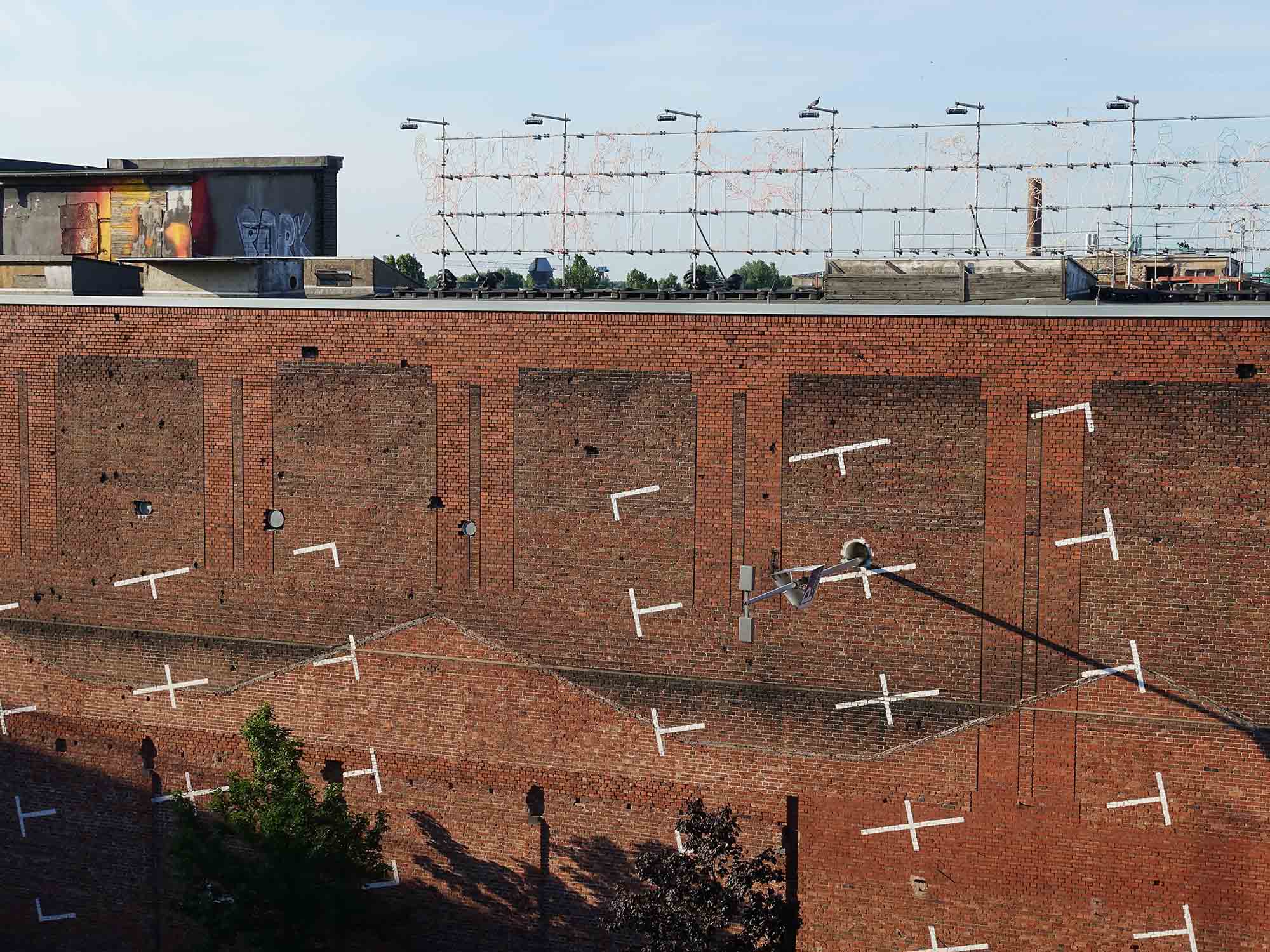
KunstWerk Cologne
Installation "Anwohnerpark" by osa for the client Plan 6 and Kunstwerk Cologne.
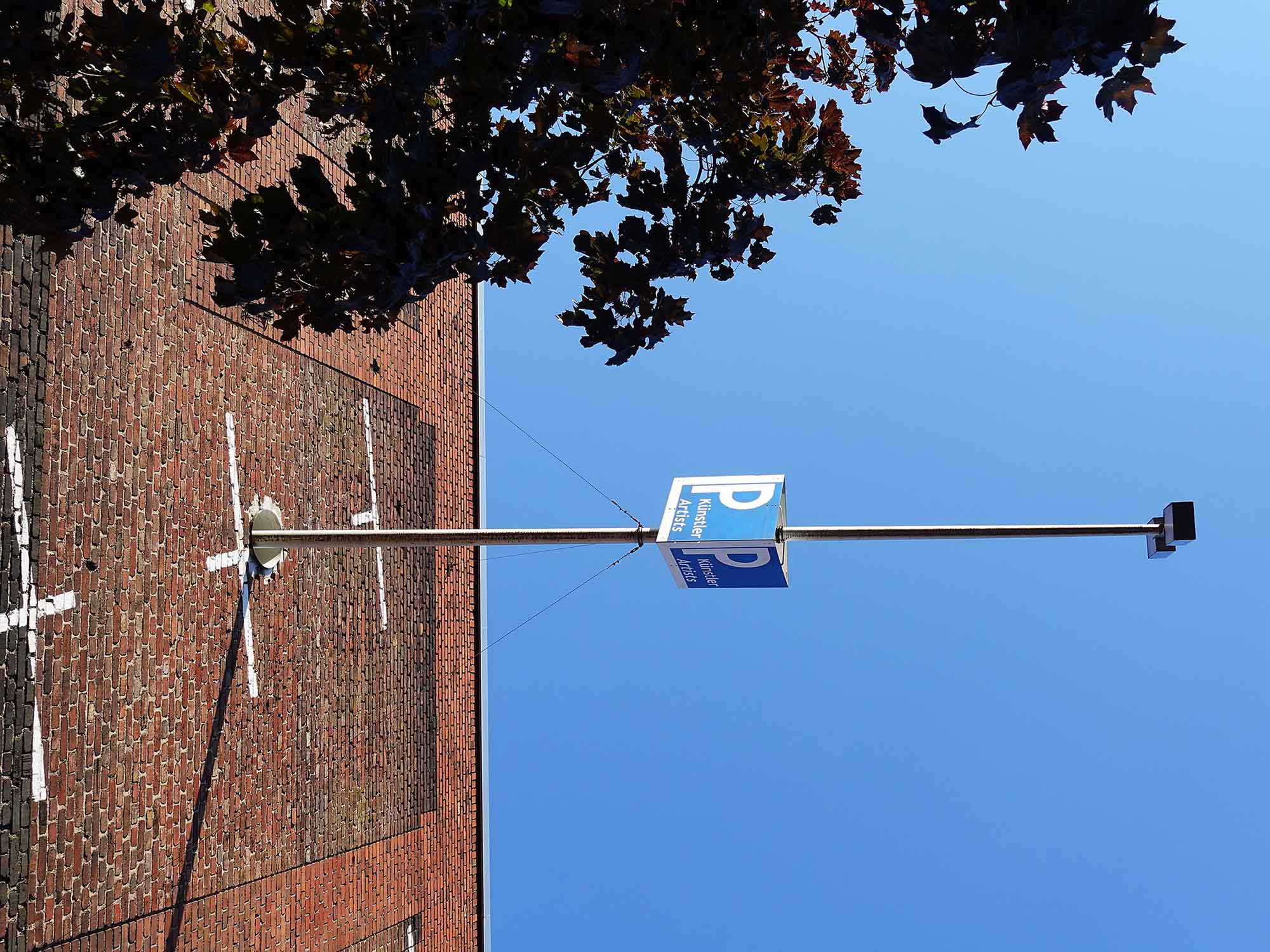
KunstWerk Cologne
osa team: Bernd Truempler, Oliver Langbein, Anja Ohliger, Anke Strittmatter and Britta Eiermann.
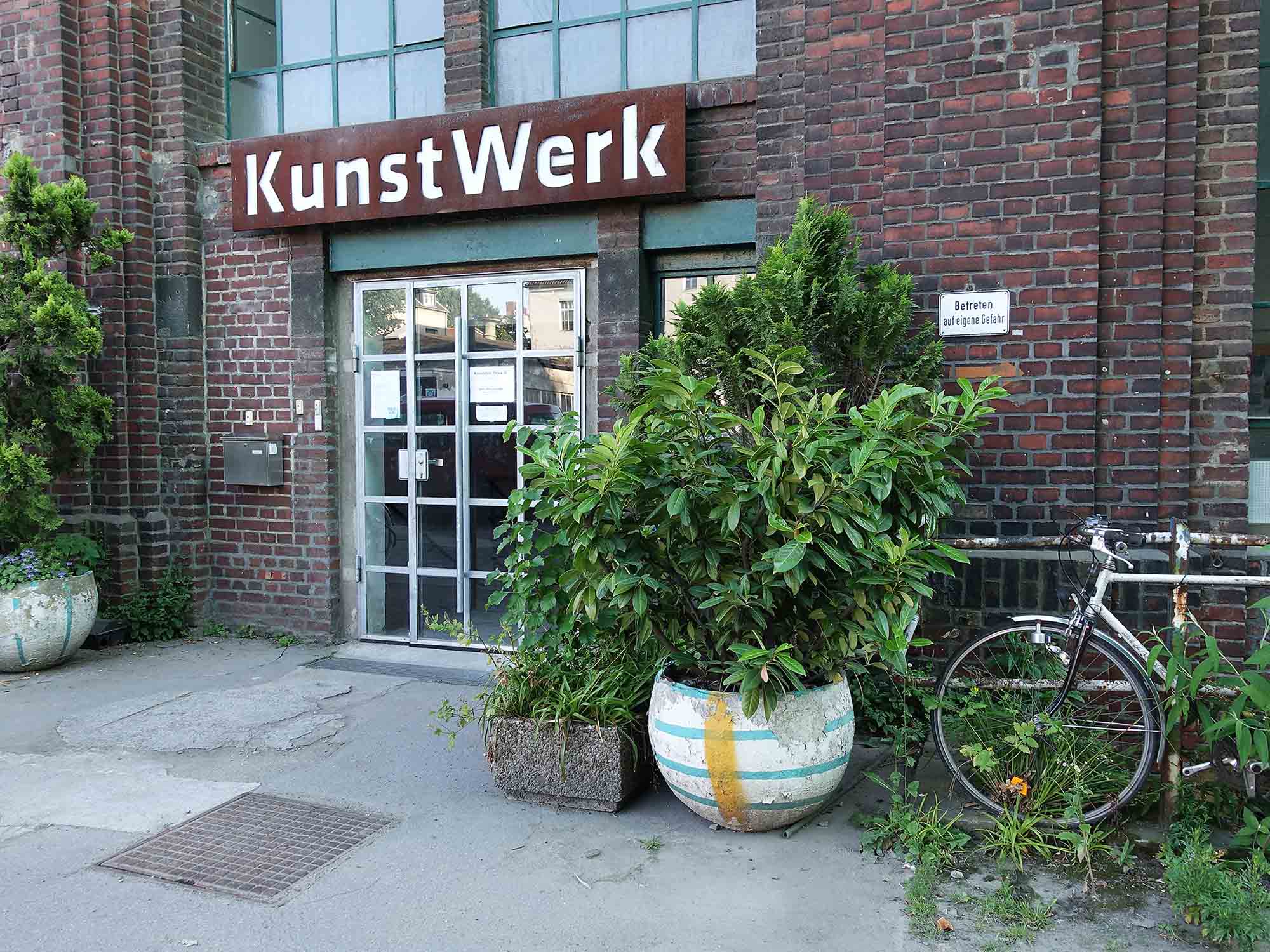
KunstWerk Cologne
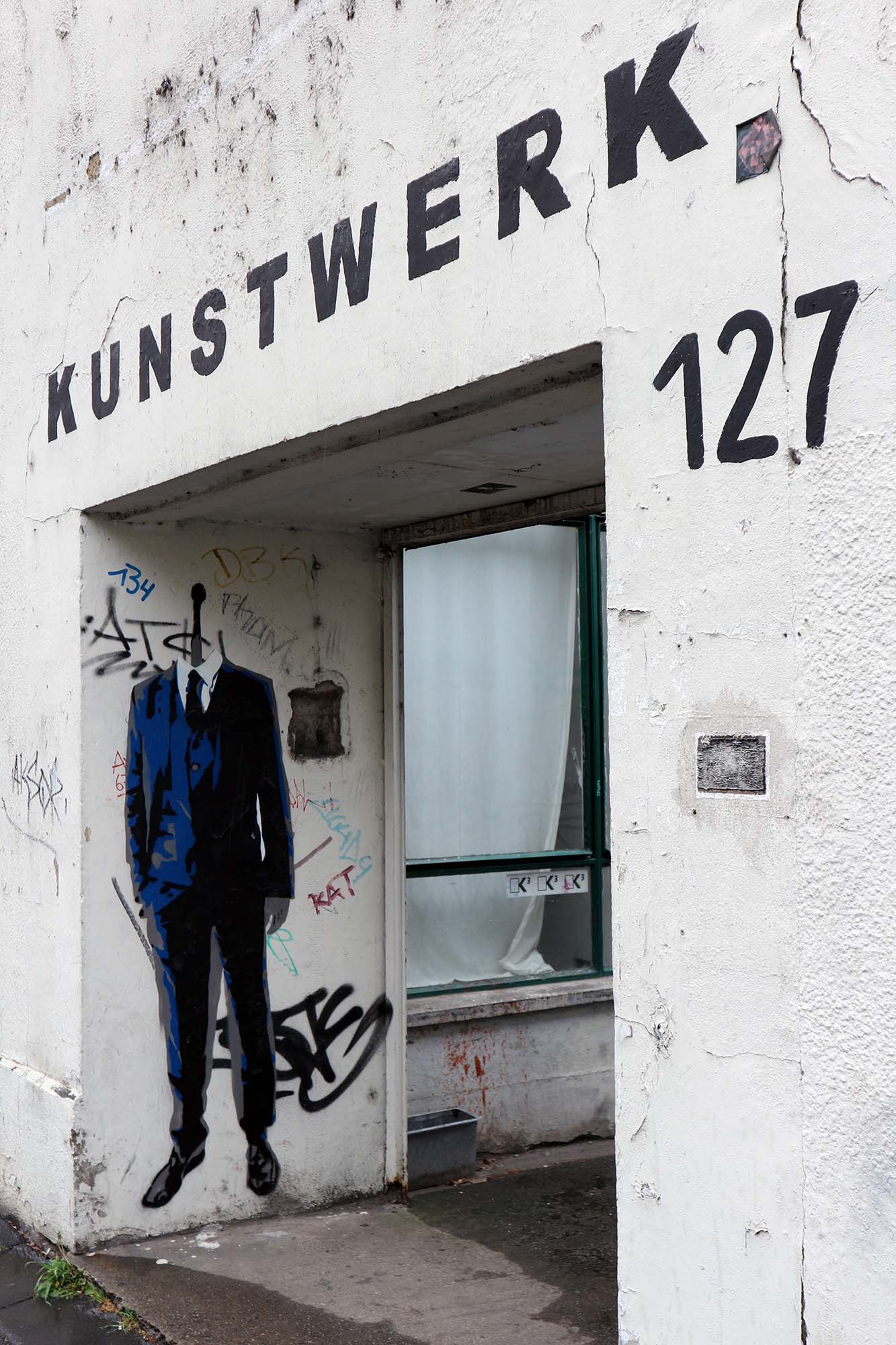
KunstWerk Cologne
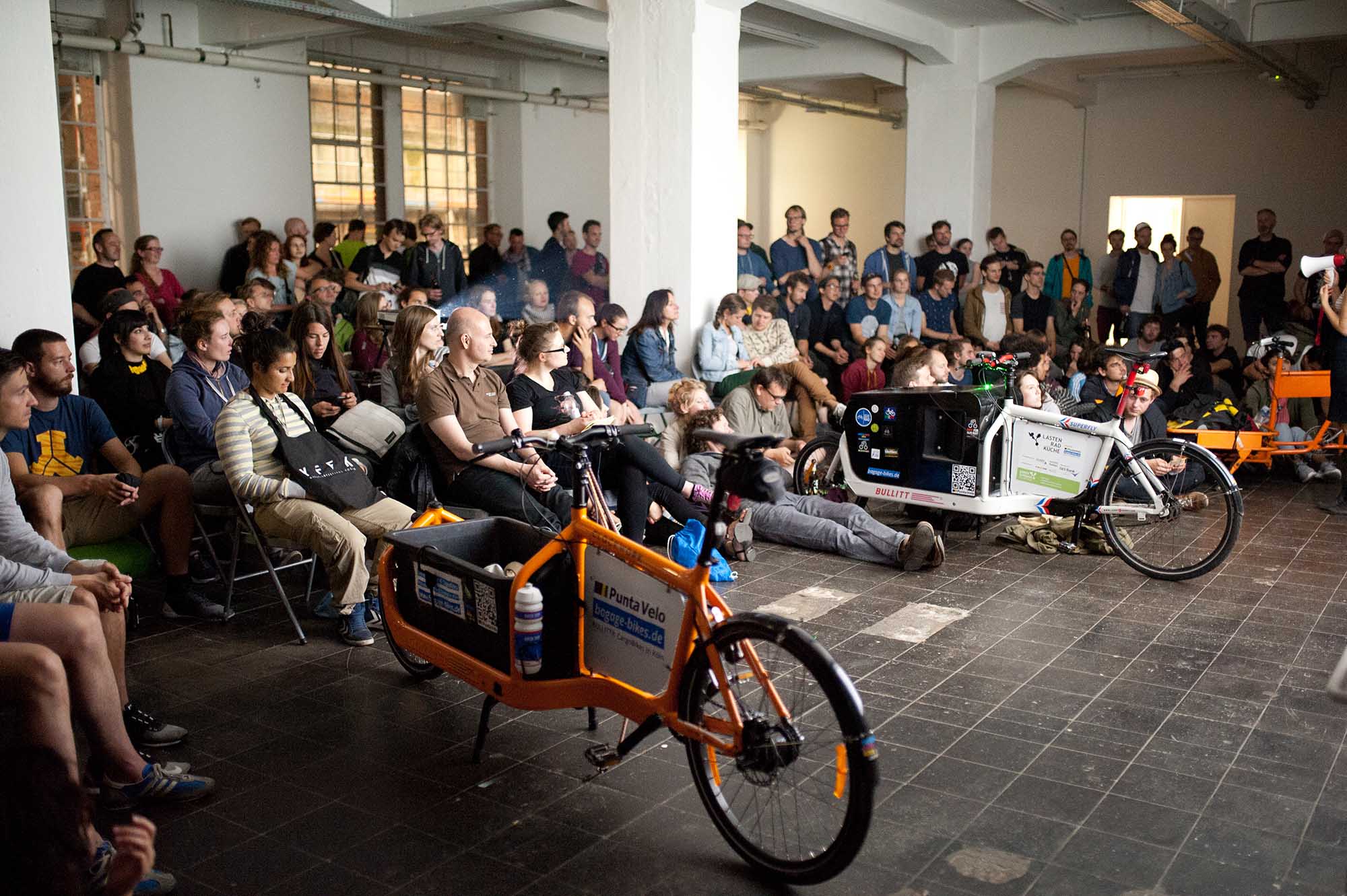
Shorts on Wheels Short Film Festival 2016
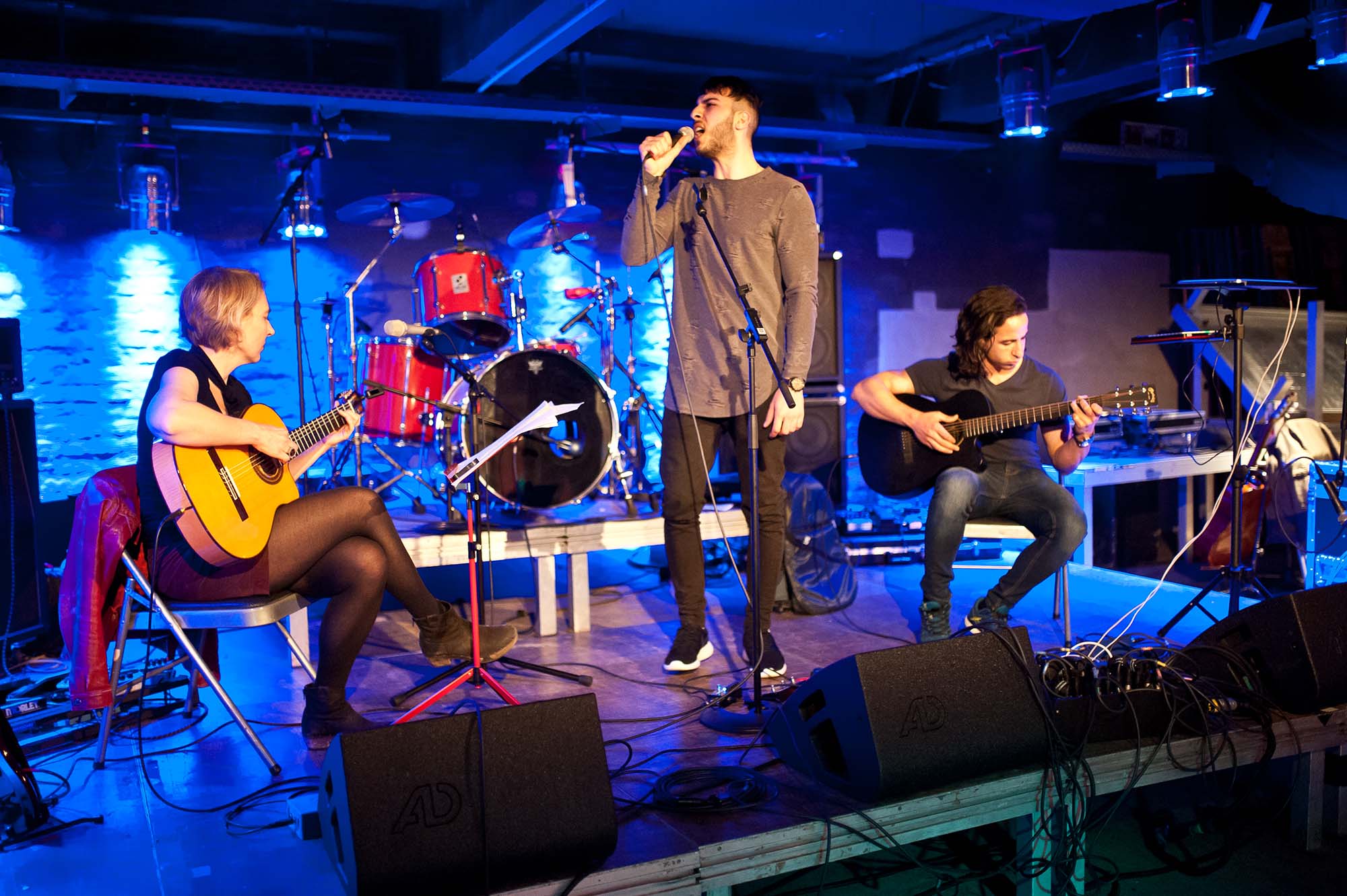
Mülheimernacht 2017
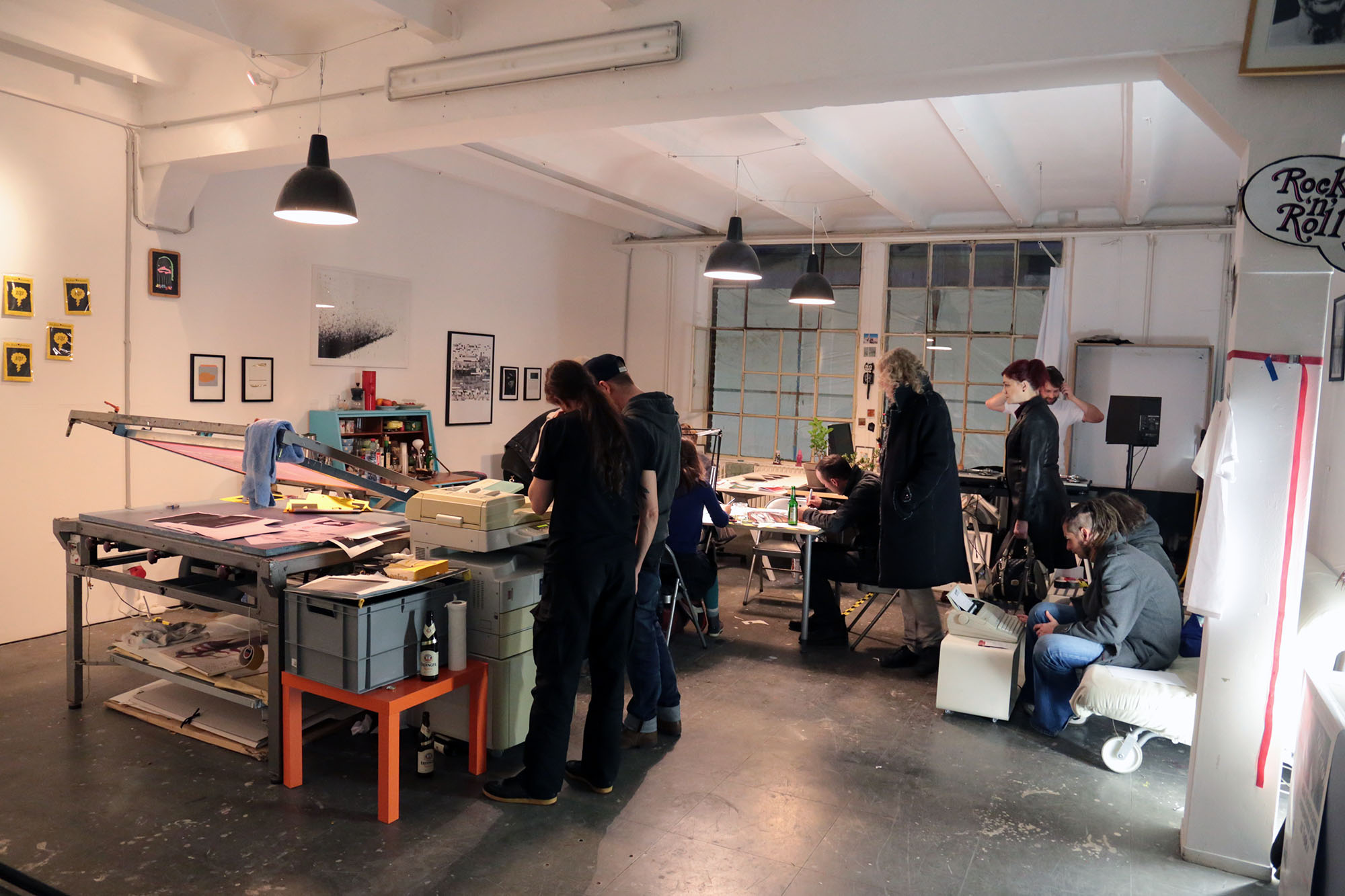
Exhibition
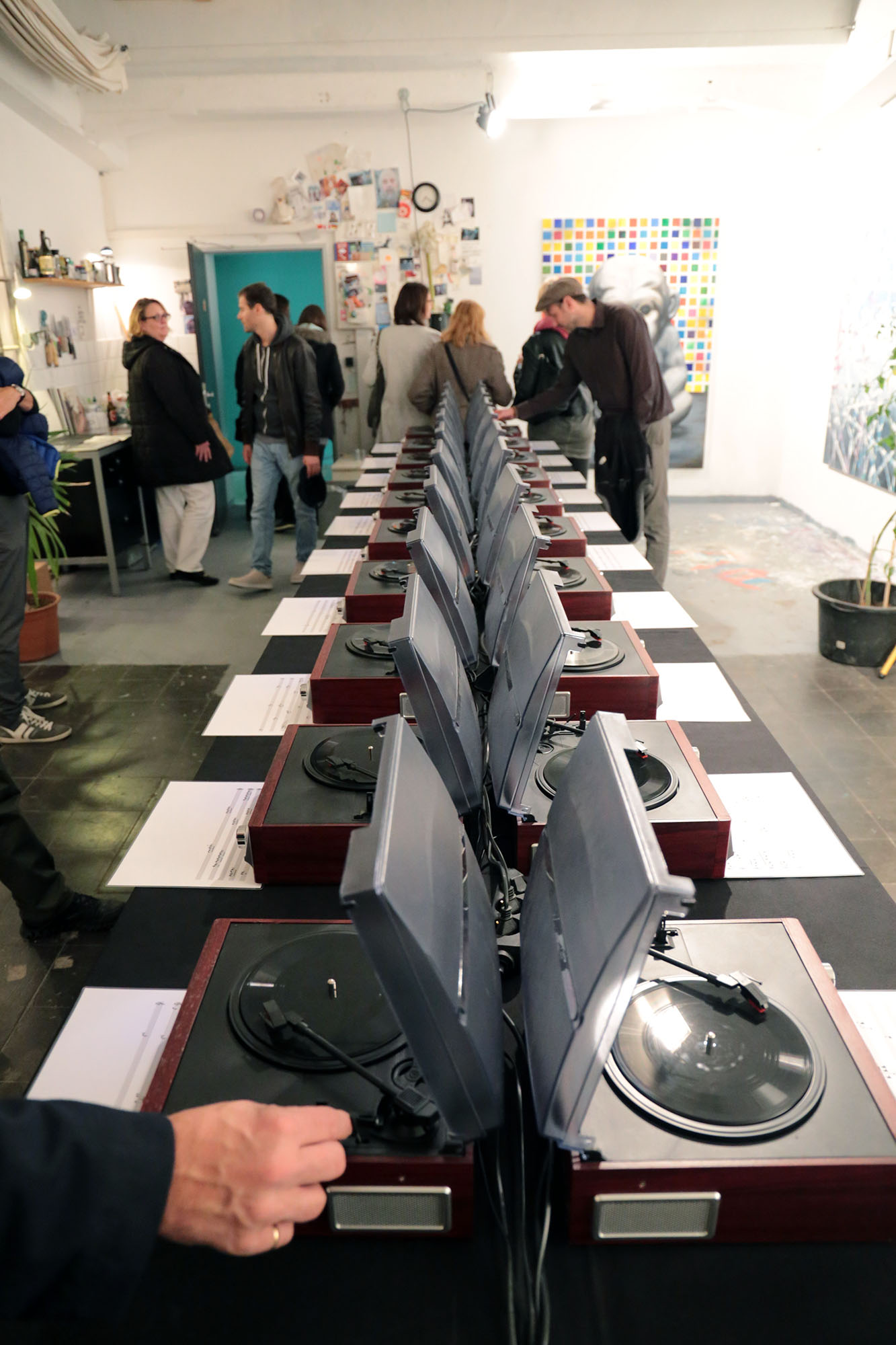
Sound Installation Slobodan Kajkut for the nxnw Festival 2016
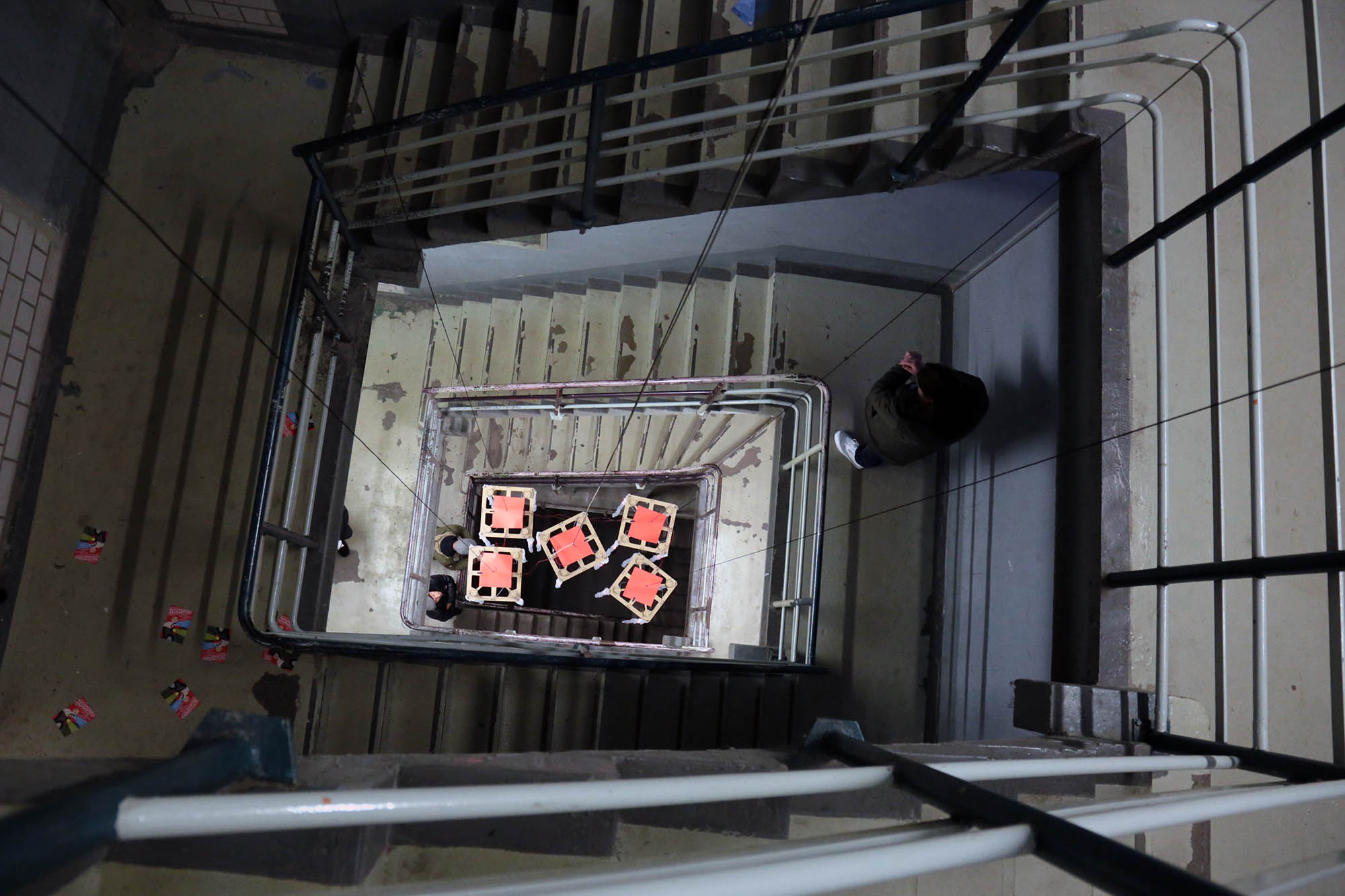
Installation stair case

Daniel Wöllenstein
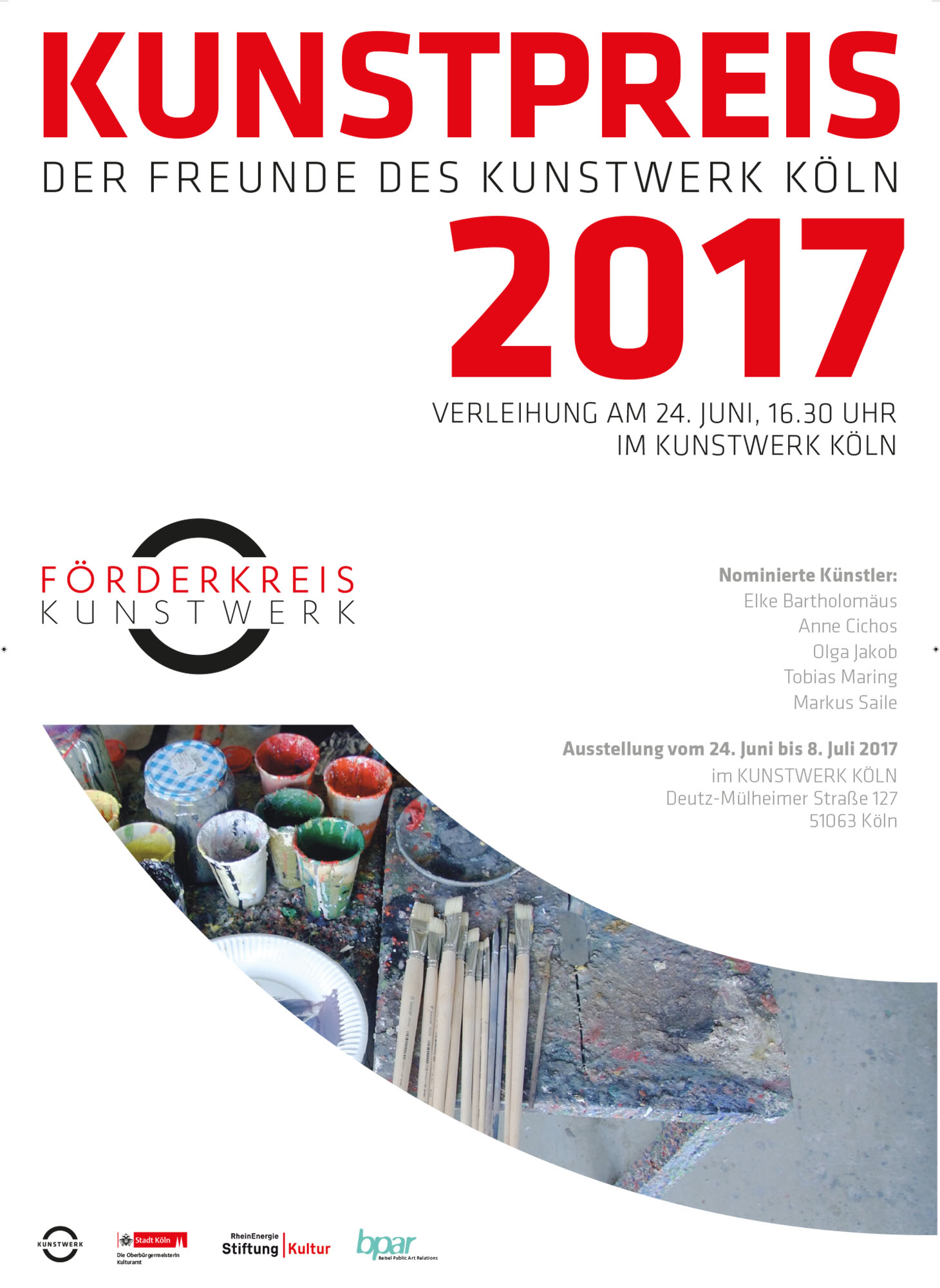
Kunstpreis 2017
at the KunstWerk Cologne
KunstWerk Köln e. V.
Address: Deutz-Mülheimer Straße 127, 51063 Köln. The KunstWerk is Germany's largest self-managed studio house with 150 artists, musicians, and designers work in 88 studios and 12 rehearsal rooms, serving virtually all art genres and musical styles. There is an exhibition hall and an event room. The House is run by a voluntary board of directors, made up of six members, elected annually, is supported by two committees, which are responsible for the exhibition program and the rental of the studios. The group of buildings was built in 1908, based on plans by Otto Grah, as a multi-floor block development and addition to existing buildings for the Cologne rubber thread factory (formerly Kohlstadt & Comp.) In the beginning, rubber thread was produced, later seamless rubber goods, such as suction cups, surgical gloves, swim caps, sponge bags, aprons, and rubberized fabrics, insulation tapes, bracelets, gas balloons, and joke items. From 1934 onwards, nozzles pressed rubber threads in mass production. In 1972 the plant was closed down after bankruptcy and the vocational training centre of the city of Cologne moved in. Since 1995, the KunstWerk Cologne has been located in the landmarked building.
Daniel Wöllenstein
born in Wolfhagen in 1981. From 2002–2009, he studied art education in Cologne. Since 2007 he has been working at the KunstWerk and has been chairman of the association since 2016. In addition, he works as an art teacher at a special-needs school while the rest of his time he works as a freelance artist.
Freunde des KunstWerk Köln e.V.
The Circle of Friends regularly sponsors two important projects: The annual award and the art prize, awarded every two years. The invitation is exclusively directed at the artists of KunstWerk. A jury selects five to six artists for a shortlist, from which a second jury determines the winner. The award includes a cash amount of 2,500 € as well as the production of a catalogue. The Circle of Friends also supports a subsequent exhibition of all five nominated artists at the KunstWerk Cologne.
Beisel Public Art Relations
The platform for art promotion was initiated by Günter Beisel, a member of the Circle of Friends. Museums and art associations can publish their press releases free of charge. A weekly newsletter is sent to approximately 8,000 feature page, art and cultural editors and journalists.
Vildan Weckbach
The Cologne photographer was born in Istanbul and grew up in Germany and at the Bosporus. She has a studio at the KunstWerk. Her work has been shown in national and international individual and group exhibitions. For THE LINK she photographed the building of the KunstWerk.